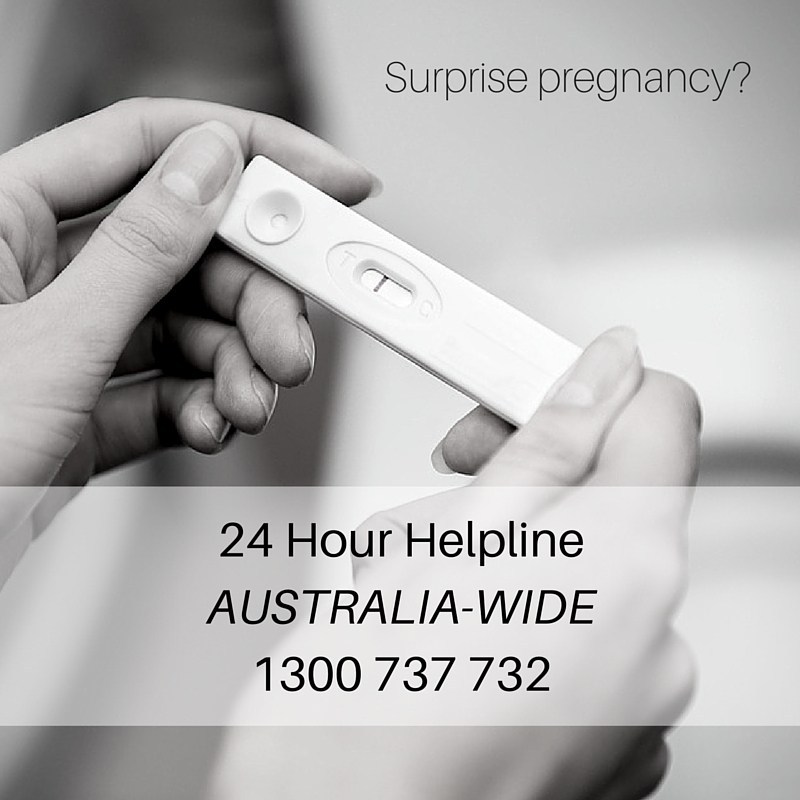
5 Misconceptions About the Abortion Pill
This article examines some of the myths that have been perpetrated about using mifepristone/misoprostol to induce abortion. I’ve used mainly pro-abortion sources, so that pro-lifers can refer to them for debates and dialogue with abortion advocates. Links to all the websites mentioned are provided at the end of the article.
How the Abortion Pill/s Work
In contrast to a surgical abortion, medical or medication abortion uses drugs to kill the baby. In Australia, the drugs are licensed by the Therapeutic Goods Administration (TGA) and marketed as MS 2-Step: they’re also known as mifepristone and misoprostol. Mifepristone blocks the hormone, progesterone, which starves the foetus. Misoprostol causes uterine contractions which expel the foetus from the uterus.
In Australia, the abortion pill is used to 9 weeks’ gestation - 63 days from the first day of the last period. In the US, the FDA recently increased the limit for use of the abortion pill from 49 days’ gestation to 70 days, (10 weeks), effectively doubling the number of women eligible for a medical abortion.
The first abortion pill is usually taken at a doctor’s office or at an abortion facility; women usually return for the second tablet and then sometime in the next few weeks for a followup appointment. However, the abortion pill is also available for order by phone and online from abortion advocates such as Women on Waves and the Tabbot Foundation.
In Australia, abortion statistics are recorded in only 2 states: South Australia and Western Australia. According to the 2014 SA report, (the latest available), 3% of misoprostol/mifepristone abortions had complications and there were a whopping 12.5% of misoprostol-alone abortions with complications. Complications after medical abortions accounted for more than half of all complications recorded.
Every website I looked at said that nausea, cramping, vomiting, chills, fever etc are to be expected during the medication abortion process. The more serious side-effects are said to be rare. The Royal College of Obstetricians and Gynaecologists puts the figure for complications after medical abortion at 5%. This is despite saying that abortion is ‘safer than childbirth.’
Let’s do some mythbusting:
Number 1: The Abortion Pill Always Works
In some medical abortion cases, not all the foetal tissue is expelled from the mother’s body; a surgical abortion is then necessary to remove the retained tissue from the uterus.
Children by Choice: medical abortions are only successful 95% of the time; incomplete abortion results in 5% of women needing a surgical abortion as well.
Marie Stopes Australia: incomplete abortion is the most common complication and happens in around 4% of medical abortions.
SA Health 2014 Pregnancy Report: Incomplete medical abortion requiring a surgical abortion occurs in 1% of cases; retained tissue accounts for 84.5% of all abortion pill complications.
Tabbot Foundation: incomplete abortion occurs in 2% of cases.
RCOG Best Practice: 1-2 % chance of incomplete abortion.
Number 2: The Abortion Pill is Safe
Excessive bleeding is a very common after-effect of a medical abortion. This can usually be treated by a curette, but in severe cases, a blood transfusion is necessary. Large bloods clots are passed by many women: the Planned Parenthood website advises that it’s normal to pass clots ‘as large as lemons’.
Children by Choice: a blood transfusion due to excessive bleeding occurs in 1 in 500 cases.
Marie Stopes Australia: a blood transfusion due to excessive bleeding occurs in 1 in 1000 cases.
SA Health: excessive bleeding requiring a curette occurs in 2% of cases.
Tabbot Foundation: blood transfusion required in 1 in 1000 cases.
RCOG: 1 in 1000 up to 20 weeks gestation; 4 in 1000 after 20 weeks.
Number 3: The Fetus is ‘Just Grey Cells’
Women facing a surgical abortion are routinely that their baby is just ‘a clump of cells.’ The favourite expression of fetus by medical abortion providers seems to be ‘just grey cells’. One provider said that the fetus is only 5mm long.
Women on Waves:
“At nine weeks, you might be able to find a sac in the blood and it is possible that you might see the embryo. With a pregnancy of 8 or 9 weeks, the embryo is about 2.5 cm. This can be distressing.”
BPAS (British Pregnancy Advisory Service)
“Under 8 weeks, you are only likely to see the sac within which the early pregnancy is developing. A 10 week fetus is about the size of a large grape and you may recognise its shape.”
Pregnancy Choices Directory:
“I was told that up until nine weeks, I would not see anything except maybe a ‘grey gestational sac’. This was a complete baby. I could see eyes, feet, arms, and the worst - or most vivid part - was that I could clearly count its fingers. It has perfect little hands. I wrapped it in tissue, cleaned myself up and called my partner, crying lots by now. I told him what I’d seen, and I don’t think he believed me, because he looked for himself. Then he broke down with me.”
Life News (a pro-life site)
“Next day insert the three pills in your cervix area, get some sleep, and wait for you to gush. Deliver in tub, so you can see this so called pile of tissue, that so called pile of tissue, has a nice round head, eyes, developing ears, hand, fingers arms, elbows, legs , feet, toes, mouth, I’ve held my 10 wk baby, have you?”
Live Action (pro-life)
“Within two hours of taking the second set of pills I had the baby in the toilet. When I turned around there it was in the sack and everything. I broke open the sack and held the helpless little baby in my hand. I cried and felt like I had just murdered someone so innocent.”
Number 4: The Abortion Pill Process Can’t be Reversed
The pro-life community is well-aware that many mothers are ambivalent about having an abortion, and sometimes women decide against going through with it, after taking the first pill. [You can read more about abortion-pill reversal here and here.] Despite the growing number of medical abortions that have been successfully reversed, abortion providers insist that the medications cause abnormalities and advise their patients not to attempt reversal.
Children by Choice:
“The medications used can cause damage (malformation) to the developing fetus; for this reason continuing the pregnancy if the drugs have not worked is not advised.”
Marie Stopes Australia:
“It is very important that you understand that mifepristone or misoprostol can damage a developing foetus. If you do not want to continue with the medical termination of pregnancy after starting, we strongly recommend that you have a surgical termination of pregnancy rather than continue the pregnancy.”
Tabbot Foundation:
“There may be a risk of harm to the pregnancy if the termination fails (about 1-2% chance) so surgical abortion should be performed in this case.”
Number 5: Women Don’t Need Followup Care
It is vital for women contemplating a medical abortion to be assessed by a doctor to ensure that their pregnancy isn’t ectopic - failure to detect an ectopic pregnancy has led to 11 deaths worldwide among women who’ve taken the abortion pill. Mail order or phone requests often bypass this important diagnosis. Aftercare is also very important, to ensure that bleeding is not excessive, and that there is no infection present. However, not all providers insist on this followup appointment.
South Australia Health: followup check and blood test recommended.
Tabbot Foundation: While this online abortion pill provider does ensure patients have an ultrasound and blood test, it fails to suggest that women are checked by a doctor at any stage of the process:
“We will provide everything necessary so that you will not have to visit your doctor or chemist. About 7 days after the abortion, we arrange a further test to confirm a successful termination. Our nurse will contact you throughout the process to support and guide you and make sure there are no problems.”
Marie Stopes Australia: no followup recommended on website.
Guttmacher Institute: In March 2016, the FDA released new guidelines stating that it was not necessary for women to see a medical professional in person after a medical abortion.
Women on Waves offers this irresponsible advice:
“If you think you might have a complication you should go to a doctor immediately. If you live in a place where abortion is a crime and you don’t have a doctor you trust, you can still access medical care. You do not have to tell the medical staff that you tried to induce an abortion; you can tell them that you had a spontaneous miscarriage. Doctors have the obligation to help in all cases and know how to handle a miscarriage.
The symptoms of a miscarriage and an abortion with pills are exactly the same and the doctor will not be able to see or test for any evidence of an abortion, as long as the pills have completely dissolved.”
Conclusion
Medical abortion is promoted as a godsend for mothers who can’t abort their babies by a surgical method for medical reasons, or who want the anonymity of aborting at home. The abortion pill is also convenient for mothers who don’t want to travel a long distance to abort their child, and prefer to turn the family home into an abortion facility.
But it is far from safe. And it is administered by people who lie about its effects on an unborn child: if the procedure is successful, then the pills simply ‘evacuate the uterus of a pregnancy.’
But, if the mother changes her mind after the first pill is taken, then the ‘pregnancy’ mysteriously turns into a ‘baby’ who is now at risk of abnormality.
If these stats aren’t enough to convince anyone that the abortion pill is simply not safe, then perhaps this figure will: 22.
That’s the number of women we know of, who died after a medical abortion, from 2001 to 2013. (The real number may never be known, thanks to organisations such as Women on Waves, who teach women to cover up their abortions and therefore cover up the true numbers of side-effects and deaths.)
Apart from that tragic figure, the number of deaths of babies due to the abortion pill is around 1.9 million.
That’s 33% of the 56, 000, 000 abortions performed worldwide, annually.
I’ll end with these words from my friend, Bea at 400 Words for Women:
“I can’t tell you what to do with your body but I have to be honest about the abortion pill; you will see the blood and the body before you flush them in the toilet. Some images are hard to forget.”
Sources:
Women on Waves: advice and delivery of the abortion pill via boat or drone.
Children by Choice: Medication Abortion
Marie Stopes Australia: Medical Abortion
SA Health 2014 Pregnancy Report
SA Health: Medication Abortion
Tabbot Foundation: Australian mail-order abortion pill business.
Embryology website
Royal College of Obstetricians and Gynaecologists: 2015 Best Abortion Practice paper
Pregnancy Choices Directory (UK)
Our Bodies Ourselves website.
Further reading: Pro-life sources about abortion pill experiences


July 1, 2017
Now matter what form od abortion is used, an innocent human being is put to death in the procvess.
July 6, 2017
Sean, I completely agree with you. From conception to birth, deliberate abortion always takes the life of an innocent child.
This article was written in response to my readers who have asked for ‘objective’ (ie not pro-life sources) for my articles. Thanks for your comment. God bless you.